A look at Irish and Irish American actors who portray space travelers in some of the most provocative and interesting shows on television.
The crowd milling around the snack table near the entrance to Stage 16 at Paramount Studios is eye-catching, even for Hollywood. A tall, uniformed fellow with grey, bulbous head sips a cappuccino through green-tinged lips; nearby a hooded creature with a dolorous leathery face and cavernous eyes makes a selection from the iced bottled water and sodas. A few feet away, a lithe being with sculpted hair and gold skin chats into a cell phone.
Further back inside the hangar-like sound stage, the scene shifts drastically to a marketplace on a planet light-years from Earth. It’s a set for the popular space series Star Trek: Voyager, and actress Kate Mulgrew, who stars as Captain Kathryn Janeway, perches in a canvas chair and intently watches the action being filmed.
Mulgrew, an award-winning actress of Irish descent who plays the role of a space traveler, sees the connection between her heritage and her characters as seamless. “I think,” she says, “that the Irish are the only race that understand the outer space of the soul. Our intellect is inclined to the Jesuit and our questions are usually mystical.”
Years after real-life Irish American astronauts Neil Armstrong and Michael Collins took their historic lunar trip in 1969, a crop of fictional characters played by Irish and Irish Americans have followed them far into the future, where people live on space stations, wander through the stars across galaxies and travel through wormholes and hyperspace. Deep Space Nine, Babylon 5 and the sharply comical Mystery Science Theater 3000 all feature space Celts, while in Third Rock From the Sun, an Irish American plays not a traveler, but a human friend of visitors from Mars.
The Irish-born Colm Meaney, of course, was the original Irishman in outer space. He created and inhabited the character Miles O’Brien in Star Trek: The Next Generation, and now reprises the role on Star Trek: Deep Space Nine, a weekly drama on UPN that takes place on the Deep Space Nine space station where O’Brien is the Chief Engineer. The brusque O’Brien keeps afloat a space station peopled by such races as the street-wise and woefully ugly Ferengi and the sinister, scaly warrior Cardassians as well as a lone changeling creature afflicted with a blurred, melted-looking face. There are also humans aboard.
Meaney’s O’Brien is also a family man. He and his wife Keiko have a child together, and storylines center around their relationships as well as the shadowy politics of the many races and worlds on the Deep Space Nine station.
Despite having been a spaceman for nearly 10 years, Meaney has managed a thriving earth-bound career in a dozen feature films, most recently the summer blockbuster Con Air in which he plays a swaggering, Corvette-driving FBI agent. His work in The Commitments and The Van has been critically acclaimed and his role in The Snapper earned him a Golden Globe nomination in 1994.
Star Trek: Deep Space Nine is one of two current Star Trek series based on the concept by Gene Roddenberry and a descendant of the series launched in the 1960s. Star Trek: Voyager is another. A time-space anomaly has stranded the starship Voyager in the far-flung Delta quadrant of the universe. As they try to find their way home, a task complicated by the ever-present risk of irritating other beings by trespassing into the wrong areas of space, the characters also struggle with their personal foibles and crises.
Voyager’s captain Kathryn Janeway guides the ship and unites a diverse crew that includes humans along with a speckle-skinned, colorfully-dressed Talaxian with an effervescent personality; several bellicose, ridge-nosed Klingons and meticulously logical Vulcans, and a rehabilitating former member of the terrifying Borg, ruthless creatures that act as one to assimilate species into their collective identity.
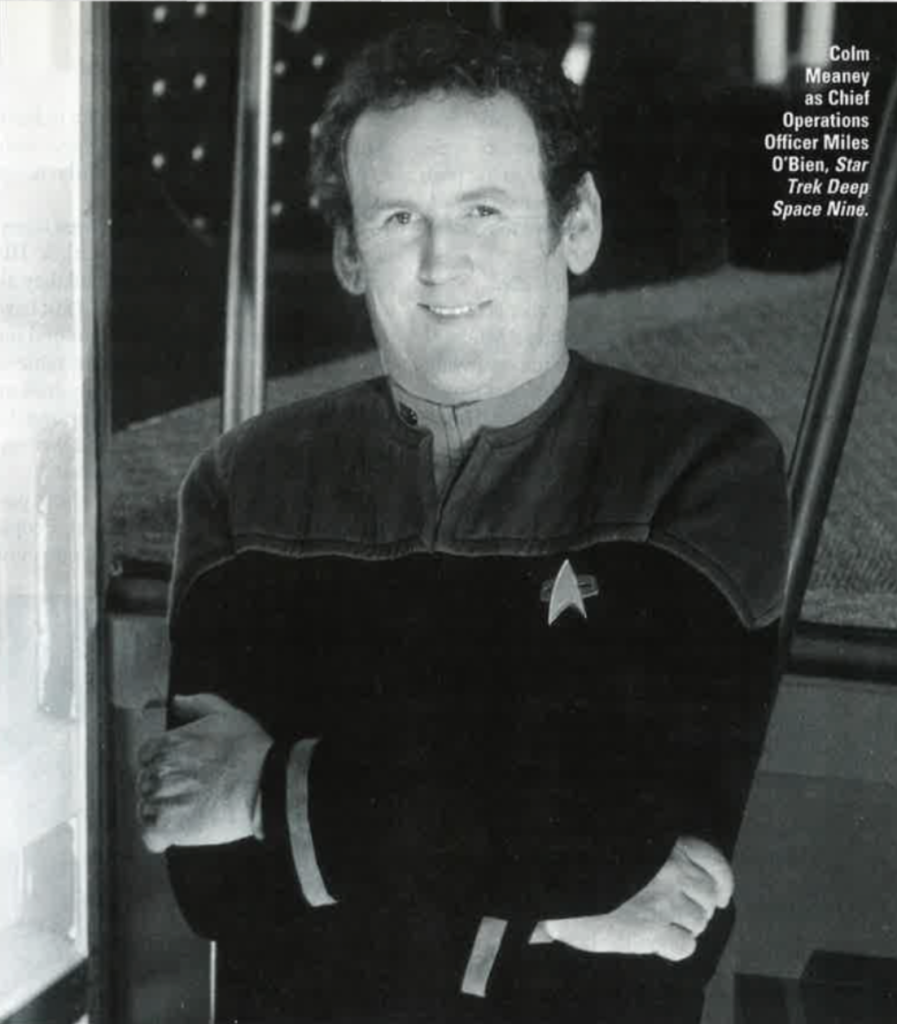
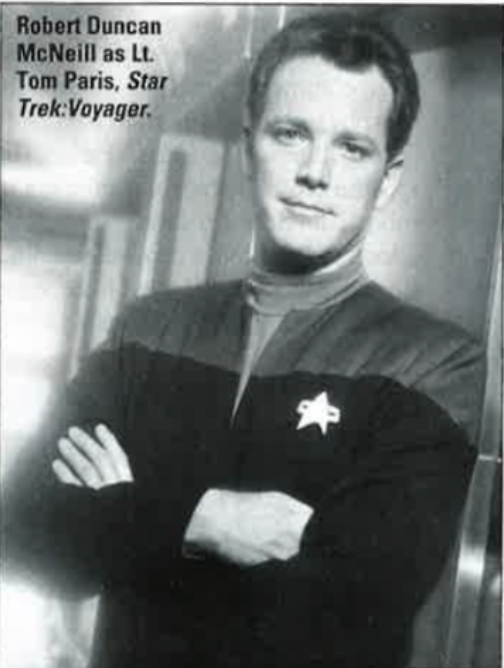
Janeway’s character is in every way informed by the actress Kate Mulgrew. And Kate Mulgrew is definitely shaped by her Irish roots. The Dubuque, Iowa native says that even though her ancestors’ origins “are pretty obscure,” her family’s Irish identity was very strong. “I mean, we are very Irish looking, our behavior is Irish, we are endemically Catholic, even though some practice, some don’t.”
It is her Celtic sense of the mystic that links Mulgrew and her character Janeway to the great beyond that is outer space. Mulgrew describes her character as “a great scientist. She’s a devoted starfleet captain but above and beyond all that, she’s a rather fascinating human being in that her humanity is more interesting and compelling to her than, I think, any other aspect of her life.”
Mulgrew has been to Ireland many times with her family, and several times to work. The feature film Love Spell: Isolt of Ireland with Richard Burton was filmed on Ireland’s dramatic west coast. “I slipped into that like a glove,” she says of the role of the star-crossed lover Isolt. “And then to have Richard Burton was sort of a kiss from God.”
And she says she related to the Celt in him. “He may have been Welsh, but he had the same Celtic drama, which is drama at its finest.”
The oldest girl in a family of eight, Mulgrew left home in the austere Iowa heartland at 17 to study acting at New York University.
Immediately after leaving school, she was cast in the daytime drama Ryan’s Hope as Mary Ryan. She was only 23 when NBC offered her a starring role as Kate Columbo, the wife of the beloved bumbling-but-savvy detective Lt. Columbo. She has since starred in mini-series and features and has worked steadily in episodic television, and has inhabited the role of the “complex and, I think, intriguing character” of Kathryn Janeway for four years. She was recently honored with a Golden Satellite Award for Best Performance by a lead in a Drama Series and a Saturn Award for Best Genre TV Actress.
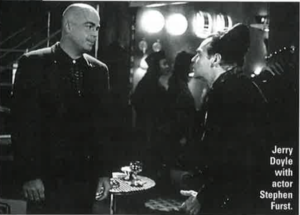
There is “an ardent and clear connection,” Mulgrew says, between her heritage and her choice of professions because of the Irish oral tradition. “No one speaks as beautifully, as heartbreakingly, or as articulately as the Irish.” It’s a trait which, Mulgrew says, “lends itself very well to the interpretive craft of acting, which is oral as much as it is visual.”
“I think that I thank God every day that I’m Irish.”
Robert Duncan McNeill is the other Celt on the starship Voyager. He plays the boyish Tom Paris, a rebellious adventurer who was in jail at the beginning of the series, but has evolved into a leader and a team player on behalf of his shipmates. McNeill describes Star Trek as a kind of quest show and says he’s proud to be part of the Star Trek tradition. “You have a sense of a real alternate world that’s been created for Star Trek.”
McNeill was a shy teenager when he began his career in community theater in Atlanta, Georgia. His mother encouraged him to audition to be a Munchkin for a local Wizard of Oz production. “Maybe she thought it would bring me out of myself.”
It did. He worked in local and regional theater until he left Atlanta for New York, where he attended Juilliard. He auditioned for and won a starring role on a particularly successful Twilight Zone episode; the attendant recognition helped him land a job on a soap. Three years of that was enough, he says, and he went back to theatrical work in New York productions of Into the Woods and Six Degrees of Separation.
McNeill says that the large canvas of space as a dramatic venue feels to him a lot like working in theater.
“That’s something I’ve always said about space — the theater is something that I’ve always loved and science fiction has a lot of those theatrical elements. Because you don’t have to play by the rules, the scientific rules we know of on earth…we can make up creatures and characters and good guys and bad guys and phenomena and all kinds of things. It’s very theatrical, and that’s something that I’ve always liked.”
McNeill’s ancestors came to Antrim from Scotland, then moved on to the United States in the 1840’s. He and his wife and two children went to Ireland last year. (He says that a third, recently arrived McNeill was conceived there). He speaks passionately about the British colonial attacks on Irish culture, admires the people who maintained the language and traditions and is very taken with Ireland’s theatrical heritage.
“I would love to do a play at the Abbey.” A friend of his in New York, McNeill says, has connections with the famous Dublin theater, and high-profile American actors tend to be welcome there. “I said to my friend in the past few years since Star Trek has been on the air, `Please talk to the Abbey!’ I’d love to go there to do a play.”
Star Trek: Voyager airs on UPN.
In another galaxy (and on another network) actor Jerry Doyle’s character, Michael Garibaldi, maintains order on the sprawling space station Babylon 5, a place that Doyle describes as “Casablanca in the year 2260.”
“It’s basically what Casablanca was, a town of intrigue and espionage, collusion, love, lust, greed, envy, peril, good against evil, right against wrong, sex — the whole shootin’ match.”
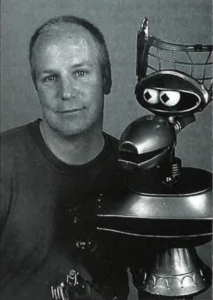
Babylon 5 — or B-5, as its fans call it — airs on TNT in the United States, and also airs in Britain, Ireland and Europe. The two-time Emmy-winning show has attracted a passionate following, no doubt owing to the mythical qualities of an epic multi-year story arc marked by startling plot twists. It is the only television show besides Twilight Zone and Star Trek to win the Hugo Award, an honor usually reserved for science fiction literature. B-5 is the ongoing saga of the struggles and politics to create peace between worlds in the future. “No one is who he appears to be,” says the heroic Nam leader G’Kar, and indeed, it can be surprising to see leather-armored, spotted Narn or solemn Mbari with bony, bluish ridges on their heads as the protagonists of stories with all the pathos and humor of classic drama.
“I don’t consider it to be strictly a science fiction show,” Doyle says. “I consider it a one-hour drama that happens to be in the science fiction genre.”
Doyle revels in his role as Garibaldi and says that there’s a lot of Jerry Doyle in Michael Garibaldi. “Executive producer, creator and writer Joe Strazynski incorporates characteristics of the actors into the characters,” Doyle explains, wryly concluding, “Thankfully I got to play myself because if they required any acting, I’d be screwed.”
That may be a little harsh, but it’s true that Doyle’s varied background didn’t include acting until 1991. The Brooklyn-born son of a New York City cop, Doyle began his career flying and selling corporate aircraft. He left that for a job at Drexel, Burnham and Lambert, the firm notorious for junk bond scandals in the 1980s, then decided he needed a change. “I got to a point where I didn’t like the process. The paycheck was good, but I didn’t like the day-to-day.” He admits that he created a resume to get into the business, but “I did a bogus resume and I’ve been gradually replacing the bogus with the legit.” And he feels lucky to have the Garibaldi role. “There are very, very many talented actors in this town who never work.”
Doyle also feels lucky to have been raised in a strong Irish-American tradition. His family is from Cork and Mayo, and they all lived near each other in Brooklyn.” I just have the fondest memories of sitting around the dining room table or the kitchen table — like with any Irish party, everybody ends up in the kitchen — and the storytelling and the piano playing and the laughter and the banter and the arguments and all of that.”
His role as Garabaldi aside, Doyle has a passion for the subject of space travel. People from NASA, he says, “embraced our show from the get-go. They liked the drama and they especially liked the science, the believ-ability of Babylon 5.” He is hooked on the NASA space program, and has become friends with real-life astronauts during countless visits to Cape Canaveral. “They are our true visionaries, true pioneers, true heroes,” he says fervently of both the astronauts and the behind-the-scenes people who send them into space. “It’s an honor to be around these people.”
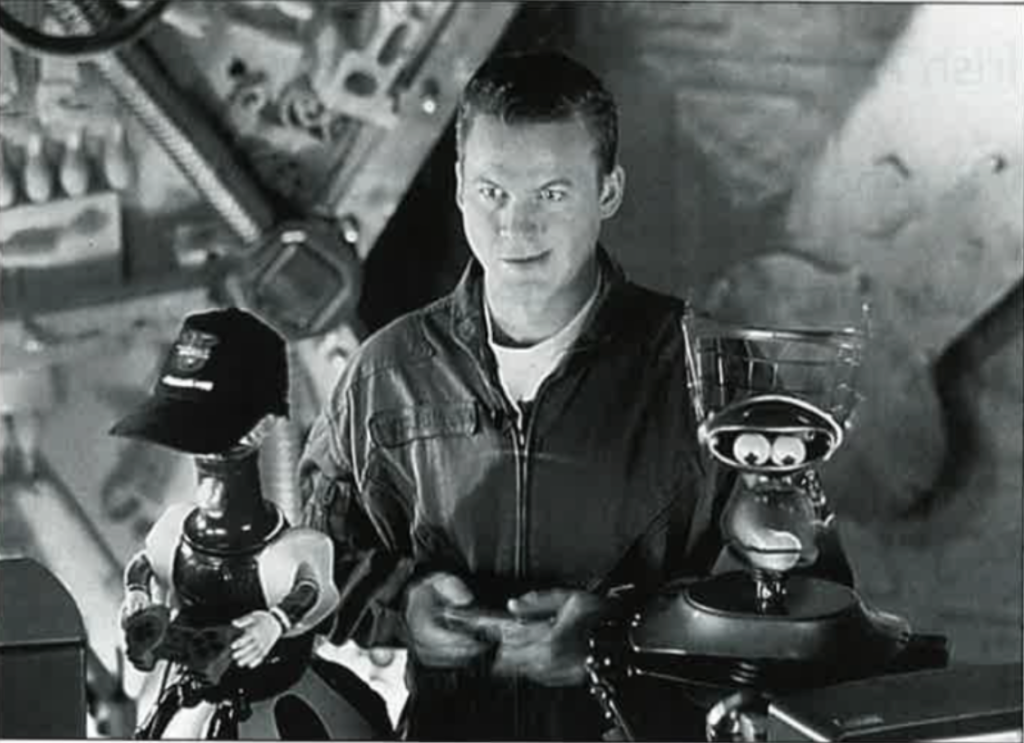
Counterposed with the almost gothic drama of B-5, in yet another galaxy and on yet another network is the Sci-Fi Channel’s outlandish and funny Mystery Science Theater 3000. Like all the Star Treks and Babylon 5, MST3K also boasts a rabidly faithful following and a fan club 50,000 strong. The show is produced in Minnesota, where its creators, Jim Mallon and Joel Hodgson, first experimented with it on local public television station KMQA nine years ago. MST3K was plucked from obscurity by the Comedy Channel (which later merged with the Ha! network to become Comedy Central), and was picked up in 1997 by the Sci-Fi Channel.
Producer, writer and cast member Kevin Murphy describes the show: “A fella named Mike Nelson has been shanghaied and is captive in space. And he is being forced to watch horrible movies as a result of some bizarre experiment. To help him out of this, he elicits the help of his robot pals, Crow T. Robot and Tom Servo, to watch the movie with him. So the end result is that you get to see a bad old science fiction or horror or fantasy film.
“At the bottom of the screen is a silhouette, and you’ll see three characters, one human and two robots, watching the entire film and making a running commentary of hopefully funny jokes about the film.”
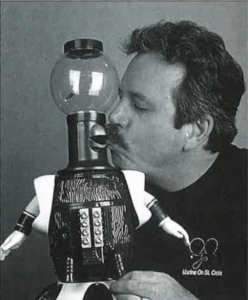
The jokes are funny. And the two smart-mouthed robots who contribute their comments are Irish-American. Murphy, who was raised in Riverside Forest, Illinois (“St. Luke’s Parish,” he specifies), is the voice and animator of robot Tom Servo, a short, brash character that resembles a gumball machine. Brooklyn-born Bill Corbett is the voice and operator of the wisecracking Crow T. Robot, who Corbett describes as “being made of stuff you’d find at the Salvation Army or your attic”: a bowling pin, a lacrosse net and ping-pong balls.
The robots were, in fact, assembled from junk by the hapless Joel, the original human who was held captive for fiendish bad-movie experiments, and have the same low-tech, we-just-built-this look as the rest of the show’s sets and costumes. Joel (played by MST3K creator Joel Hodgson) was replaced by Mike Nelson a few seasons ago in a farfetched plot sleight-of-hand.
The robots are more knowledgeable than one might expect as they offer commentary on the always-terrible movies. “A lot of the references they make in the movie theater are stuff that presumably a naive little newborn robot wouldn’t necessarily know,” Corbett says. “Very, very specific things about pop culture. I think people give us a lot of leeway in terms of it being a comedy.”
Crow’s character was originated by comic Trace Beaulieu and Corbett was thrilled to step into the role after Beaulieu left to pursue his career in Los Angeles. “I think the writers are so good on this show that I think a lot of it takes care of itself. He gets the good lines, so it’s easy to be amusing as Crow.”
Corbett first moved to Minnesota to work at the distinguished Guthrie Theater after studying theater at Yale. He had just left the Midwest and was settling into Los Angeles when MST3K cast member and head writer Mike Nelson contacted Corbett about returning to Minnesota.
Corbett laughs as he recalls seeing the Corbett family crest in an Irish import shop in Minneapolis “and there was a crow on it! It was my destiny!”
Like Voyager’s Mulgrew, Corbett, whose family roots are in Dublin, feels that his heritage informs both his career path and the Crow character. The Irish, he says, have “always had, as part of the culture, storytelling and a kind of wry, morbid humor — and a kind of wise-assness that fits in perfectly with this show. And I don’t even have to go back across the ocean to make that connection. I just think of some of my older relatives.”
For his part, Murphy describes growing up with a sense of being Irish that was “really more of an affectation than it was a real sense of my heritage.” But then as an adult “I read more about what that characterization is — you know, family dynamics, the psychology of people who came over — I kind of fit right into those grooves. So I guess I’m more Irish than I think I am.”
Murphy’s roots are in Cork and Kerry, and he traveled in Ireland with his wife. “I know it sounds goopy and silly, but I loved everything about it.”
But his main preoccupation is in outer space these days, as the character Tom Servo, who he describes as “sort of full of himself, with a little short man’s complex, because he’s kind of small and husky and red and he’s got a big booming voice.” And the little robot thinks he’s a ladies man. “He’s been known to call himself a chick magnet.”
Murphy has played Servo for eight of MST3K’s nine years. Any parallels between Servo and Murphy? He laughs. “I’m not as short as him, but I may be as husky. Although I’ve never considered myself a chick magnet.” Murphy/Tom Servo may be wise-cracking in space a long time, judging by the accolades MST3K has received. The show won the prestigious Peabody Award in 1994 and has been nominated twice for the Cable Ace Award and once for an Emmy.
Murphy can handle the pressure. “I attribute a lot of my sense of humor and my ability to let things roll off my back to my Irishness. My ancestors have been doing it for centuries, so I think I do the same.”
MST3K airs on the Sci-Fi Channel — check local listings.
One space-related show that takes place right here on Earth is NBC’s Third Rock from the Sun. Two-time Emmy winner Jane Curtin’s character is not a starship captain, or a robot, or even a member of another race from another planet — but some of her friends are.
As Third Rock’s Dr. Mary Albright, she is an object of the affections of the high commander of a four-being alien expedition to the “third rock” who passes himself off as a professor of physics at an Ohio university. John Lithgow portrays the mercurial and easily-put-in-a-snit Dick Solomon.
One of Curtin’s most famous roles echoed Lithgow’s — as one of the original Not Ready for Prime Time Players on Saturday Night Live in the 1970s, she was the mother in the Conehead family. Despite the elongated bald heads common on their planet, and their flat, literally translated speech, the family claimed, not entirely convincingly, to be from France. She later reprised the role in the feature film The Coneheads.
Third Rock won an Emmy in 1997, a reflection of the growing public affinity for programs with extraterrestrial themes. As these kinds of shows proliferate, Irish Americans are sure to be part of them, continuing their real-life and on-screen fascination with the star-lit vault of outer space.
It’s a sense of awe that leaves the usually fast-talking Jerry Doyle fumbling for words. “It’s — it’s magical — it’s the Mona Lisa, it’s the Pietà — it’s — just such a — wow — whew — it’s incredible! It’s moving.”
“It’s the big secret, isn’t it?” muses Mulgrew. “A mystery. But we Irish love that mystery.”
Editor’s Note: This article was originally published in the September/October 1998 issue of Irish America. ⬥

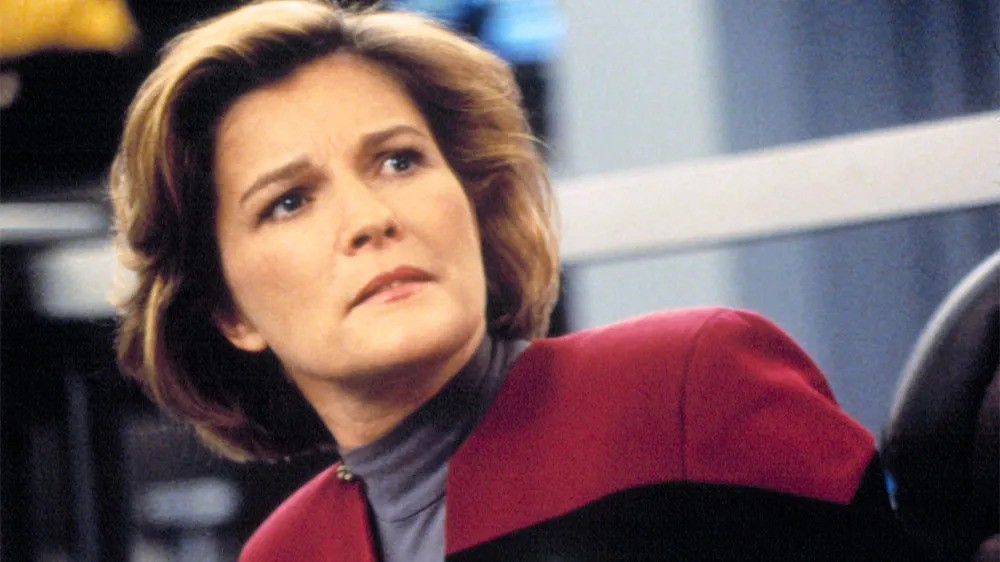
Leave a Reply